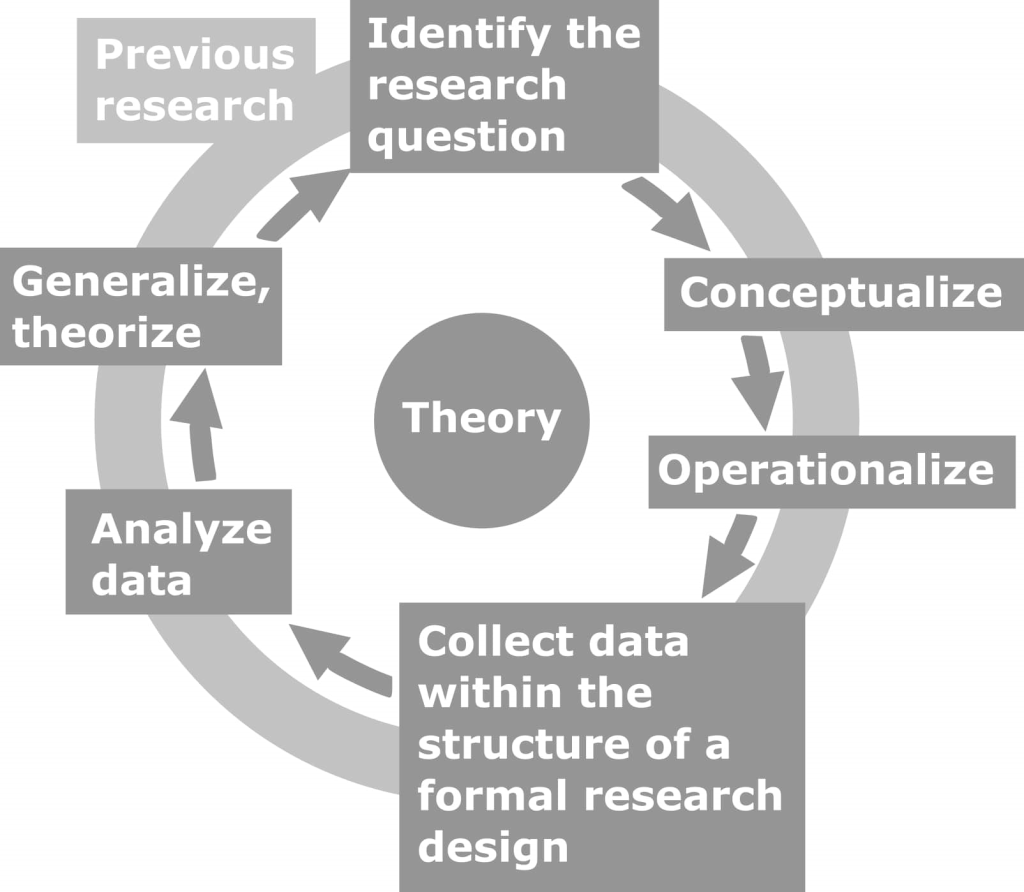Introduction and our model of the research process
Social science research methods are those skills and techniques we use to build knowledge about social phenomena. In this text, we are specifically interested in empirical social science research methods as a way of building knowledge. When using empirical methods, we are building knowledge based on systematic observations. Other forms of building knowledge, such as legal analysis, philosophical reasoning, and theory-building, are very important in the social sciences; they’re just not the focus here.
Just like much of the social phenomena we learn about, the process of doing social research can be depicted by a model. A model, of course, is a simplification of reality and shouldn’t be mistaken for the real thing (an error called reification). The reality is more complex and more iterative than the model suggests. It is, though, a good way to structure our thinking about the research process. Here’s the model I prefer, adapted from Edward Olson and Laurence Jones’s 1996 textbook, Political Science Research:


